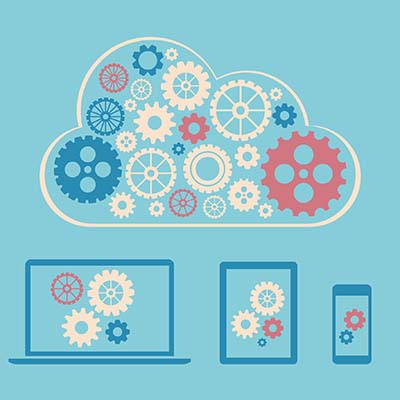Storing data on the cloud is now common practice, for both business and home computer users. It’s easy, flexible and your data is accessible when you’re on the move. You can save money on hardware for data storage and as an easy way to back up your files it’s hard to beat. Before implementing a cloud data storage strategy for your business you’ll need to design a plan for cloud data management, to facilitate easy migration and ensure appropriate security measures are in place.
Cloud Data Storage Options
Your first decision will be what type of cloud access you need. Using the public cloud is the most affordable option if you have a limited budget. The public cloud is fully managed by the provider and multiple users share cloud space. The private cloud uses a private network and dedicated software and hardware customized for your business. This is the most secure option. A third choice is the hybrid cloud, a mix of the two. This allows users to store priority information more securely, while using the public cloud for less sensitive or everyday operations.
Data Must Be Organized
No matter which option you choose, you will need to plan the way your data will be organized in the cloud. The sensitivity of the data is one consideration. File size and user access requirements might also be relevant, depending on your business operations. For effective cloud data management, categorizing your data is vital, both at the beginning when you migrate your files and afterward when you want to access it as quickly and efficiently as possible.
Outline the Migration Process
For a business, it might take a bit more thinking it through to decide what goes with what and where. Cloud data storage is flexible and scalable, but it saves time to organize your data in the most practical and efficient way from the start. If you’re moving your operations to the cloud, rather than just using it to back up files, you’ll also need to prioritize the order in which you migrate your different categories of data. It’s also critical to ensure that your applications can communicate with your data, without time-wasting delays.
It’s a bit like moving house. You’ll put your kitchen and bathroom goods in different boxes. And you’ll pack pots and pans separately from food cupboard contents. Computer cables are packed with the computer so you can get connected quickly. When you unpack, you’ll have a cupboard plan, so private stuff is safely stored and medicines are out of reach of the kids. Every business is different, so it’s essential to know what goes together and what needs to be up and running first and last.
When You’re Up and Running
You’ll also need to customize your cloud data management plan thereafter. Figuring out how your business is going to utilize your cloud data is half the battle, so take some time to think about how your databases function in your daily operations before you start. You’ll have the option of using various automated services, so that data you upload can be automatically quarantined and classified if you require. This also requires pre-planning and careful data organization, but could save you time and energy.
Any information that your business needs about cloud data management can be provided by Quikteks. We want to be your go-to cloud management professionals. To learn more, reach out to us at (973) 882-4644.

